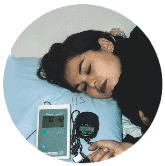Introduction
Human being has evolved in an environment in which we respect the circadian light and darkness patterns for our activities. However since always , there has been a reduced number of people that have had to remain alert while other people rest, either to control a wild animal from coming close or to protect belongings from a theft. With the progress the need of a bigger number of people beginning work at non-habitual schedules has increased. So health personnel in hospitals, firemen, police, emergency services, journalists, etc.
The high cost of technology has also pushed so that a higher number of individuals work in shifts system, as to be able to diminish the impact of investment in equipment.
The explosive growth of mining in Chile in the last two decades has taken thousands of people to incorporate to a labor force that works continuously . The What is going on? With these workers that apart from working in altitude they do it in shifts, has been a reason for the development of investigation in this field for CETHA.
The knowledge in the shifts area is scarce, from a point of view of having clarity about human beingās behavior facing the multiple environment influences and its physiologic response to these, but it is enough to know some of the shifts that attempt against the workers health and its work performance.
This information also allows to improve the performance of a worker in a given shift system, achieving for instance a higher degree of alert, higher agility in maneuverings, increase in the number of turns when driving a truck and decreases the number of accidents, among other benefits.
For more detail go to shifts.ppt and the chapters of the book "Nutrition, Physiology and Exercise in Altitude" of "Normal Sleep" and "Sleep in Altitude".
 |
|